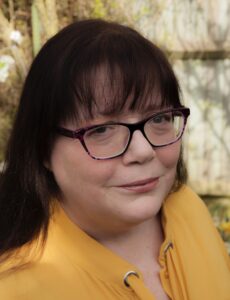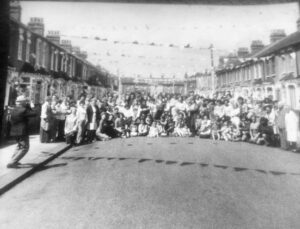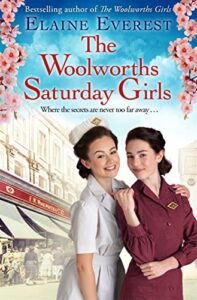 Little did I l know that my first Saturday job at the age of fifteen and three months at the Dartford branch of Woolworths would lead me to write a series of historical sagas over fifty years later, or that the home I lived in for twenty years when first married would provide me with such a wealth of happy memories. Those memories still feature in my books today, in fact I’ve just filed my tenth book set in and around Woolies during the early 1950s.
Little did I l know that my first Saturday job at the age of fifteen and three months at the Dartford branch of Woolworths would lead me to write a series of historical sagas over fifty years later, or that the home I lived in for twenty years when first married would provide me with such a wealth of happy memories. Those memories still feature in my books today, in fact I’ve just filed my tenth book set in and around Woolies during the early 1950s.
I was born and brought up in Erith, Kent, growing up listening to my parents and family members talking about ‘the good old days’ even there were times when life wasn’t so good. The history of the small town on the south bank of the Thames has a rich history not only of its involvement during the two wars, but also of family life which fascinated this young child – and still does to this day. With my mother passing away at the age of forty I hung onto the stories she told me about growing up in the war and what happened to her family members. I would need to write many more books to cover all her memories and what I’ve discovered since she died. Even though I’ve moved away from the area I only have to close my eyes and I’m back there in the street where I had such happy memories and, in my mind, walk through the old Erith which was, in my childhood very much as it was during WW2.
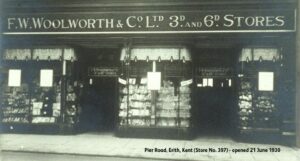 As I explain to new writers, memories are fine, but writers must ensure stories we’ve grown up with fit in with the history of that time. Use archives and read, read, read as much as you can about your subject. Believe me if we get anything wrong our readers will soon correct us. One of the joys of being an author and setting my books in and around North-West Kent is being able to chat with local people and hearing their family stories and memories of the town and Woolworths; there is a large community of ex Woolies employees, and they love to share their stories.
As I explain to new writers, memories are fine, but writers must ensure stories we’ve grown up with fit in with the history of that time. Use archives and read, read, read as much as you can about your subject. Believe me if we get anything wrong our readers will soon correct us. One of the joys of being an author and setting my books in and around North-West Kent is being able to chat with local people and hearing their family stories and memories of the town and Woolworths; there is a large community of ex Woolies employees, and they love to share their stories.
When I wrote that stand-alone book – yes, The Woolworths Girls was originally commissioned as one book – I become so interested in the history of that well-known store and started to collect old copies of The New Bond, the Woolworths monthly staff magazine. I have copies from as far back as the 1930s and they hold a wealth of information about the different stores, staff celebrations, employment anniversaries as well as advertisements from those times; I lose hours reading through my stash!
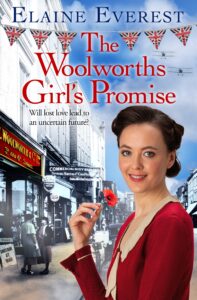 Of course, local history and store information is important, but this author needs to know what is going on in the outside world away from the town and Woolworths, and importantly how it plays a part in my ‘girls’ lives. Hours spent at the local archive centre as well as having my nose in a non-fiction book means I glean information that may just appear in my stories.
Of course, local history and store information is important, but this author needs to know what is going on in the outside world away from the town and Woolworths, and importantly how it plays a part in my ‘girls’ lives. Hours spent at the local archive centre as well as having my nose in a non-fiction book means I glean information that may just appear in my stories.
Do I envy authors who set their stories in exotic locations? Of course, I do! However, the joy for me is knowing I only need to close my eyes and step outside the front door of number 13 Alexandra Road to see again my characters and hear their stories.
Elaine’s website: www.elaineeverest.com

